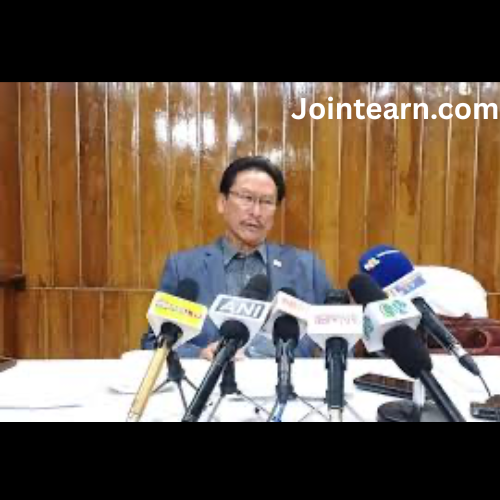Patna, Bihar: Bihar witnessed a historic voter turnout during the first phase of its 2025 Assembly elections on Thursday, with a provisional 64.46 percent of eligible voters casting their ballots, marking the highest participation in the state’s electoral history. Chief Electoral Officer (CEO) Vinod Singh Gunjiyal confirmed the figures at 6:00 PM, when polling concluded across 18 districts and 121 Assembly constituencies (ACs).
The first phase of polling involved more than 3.75 crore voters, exercising their franchise across 45,341 polling stations, of which 36,733 were located in rural areas. The phase, which began at 7:00 AM, concluded peacefully at 6:00 PM, under tight security arrangements deployed by the state administration and monitored closely by the Election Commission of India (ECI).
“This is a historic turnout. Around 64.46 percent of voters participated in the first phase, demonstrating the enthusiasm of the electorate despite challenges,” CEO Gunjiyal said, emphasizing the efficient management of polling operations across both urban and rural constituencies.
The record turnout surpasses previous highs in the state, which include 62.57 percent during the 2000 Bihar Assembly elections and 64.6 percent during the 1998 Lok Sabha elections. Observers noted that the robust voter participation reflects growing political awareness and engagement among Bihar’s electorate, particularly in rural areas where election management often faces logistical and accessibility challenges.
Among the 121 constituencies that went to polls in the first phase, Begusarai recorded the highest voter turnout, while Sheikhpura saw comparatively lower participation. CEO Gunjiyal noted that polling was conducted smoothly at most centers, though minor issues and complaints were raised during the day. In total, 143 complaints were received by the authorities and were promptly addressed, ensuring that voters could exercise their rights without hindrance.
In an effort to enhance transparency, the ECI deployed live webcasting at 100 percent of polling stations for the first time in Bihar. Chief Election Commissioner (CEC) Gyanesh Kumar, along with Election Commissioners Sukhbir Singh Sandhu and Vivek Joshi, closely monitored polling through these live feeds, providing real-time oversight and ensuring accountability across the state.
However, despite the overall smooth conduct of elections, a few incidents of disruption and alleged intimidation were reported during the day. In Lakhisarai, Bihar Deputy Chief Minister Vijay Kumar Sinha alleged that his convoy was attacked by individuals affiliated with the Rashtriya Janata Dal (RJD). Sinha claimed that he had been in the area responding to complaints from voters who alleged intimidation at certain polling booths. The Additional Chief Electoral Officer, Amit Kumar Pandey, stated that the poll body had sought a detailed report on the incident and would take action based on the findings.
Similarly, in the Manjhi assembly constituency of Saran district, the convoy of Satyendra Yadav, the sitting MLA from the CPI(ML) Liberation party, came under attack by unidentified assailants. Police confirmed that all occupants, including the MLA, escaped unharmed. These incidents underscore the challenges of ensuring complete security during elections in politically competitive regions where rival parties often have strong local presence.
In addition to these disruptions, the Election Commission noted sporadic instances of booth-level boycott in Buxar, Fatuha, and Suryagarha. While the reasons for the temporary boycotts varied, officials maintained that overall polling proceeded effectively, with corrective measures taken to allow voters access to polling stations.
The first phase of polling also saw the participation of a diverse electorate, including a large number of women, senior citizens, and first-time voters. CEO Gunjiyal highlighted that inclusive participation was a key priority, with arrangements made to ensure accessibility for voters with disabilities and the elderly. Special attention was given to rural areas and remote constituencies, ensuring that polling equipment, security personnel, and logistical support were in place to facilitate a smooth voting process.
As voters turned out in record numbers, political parties and candidates actively campaigned across constituencies, urging citizens to exercise their franchise. The first phase was widely seen as a critical test of voter sentiment, with high turnout reflecting both enthusiasm for participation and engagement with key political issues in the state.
Looking ahead, the remaining 122 constituencies are scheduled to go to polls in the second phase on November 11, with results for the 243-member Bihar Assembly slated to be announced on November 14. Analysts note that the outcome of the first phase, along with voter behavior and turnout patterns, will provide early indicators of possible trends for the second phase.
Political observers have also highlighted the importance of maintaining law and order during this highly charged electoral period. The ECI’s proactive measures, including live monitoring, immediate redressal of complaints, and deployment of additional security personnel, are seen as critical in ensuring free and fair elections. The reported incidents of convoy attacks and booth-level disturbances, while limited, will be closely investigated to ensure accountability and prevent any influence on voter behavior.
The high voter turnout in the first phase of the Bihar elections is being interpreted as a strong signal of active democratic engagement. It demonstrates the electorate’s determination to participate in shaping the political future of the state, reflecting widespread awareness of the stakes involved in this crucial election. With 1,314 candidates contesting in the first phase, the competition was intense, and parties have mobilized substantial resources to reach out to voters across rural and urban constituencies.
Observers also pointed out that this record turnout may have implications for future governance and political dynamics in Bihar. The ability of citizens to participate meaningfully in elections contributes to stronger accountability mechanisms and enhances the legitimacy of elected representatives. Moreover, the success of logistical measures such as live webcasting, efficient complaint resolution, and accessibility arrangements may serve as a model for further improvements in the state’s electoral management.
In conclusion, the first phase of the 2025 Bihar Assembly elections has set a historic benchmark with a provisional voter turnout of 64.46 percent, reflecting heightened political engagement and public participation. While minor incidents of disruption and intimidation were reported, the Election Commission’s prompt interventions and close monitoring ensured that the polling process remained largely smooth and credible. As the state prepares for the second phase of polling on November 11, all attention will be on the Commission to maintain the integrity of the electoral process, address complaints, and ensure that every eligible voter can exercise their franchise freely and without fear.
The first phase has already underscored the vitality of democracy in Bihar and the determination of its citizens to participate actively in shaping the future of the state. With continued vigilance and administrative efficiency, the second phase of elections is expected to build on this momentum, culminating in a comprehensive and credible electoral outcome on November 14.


Leave a Reply